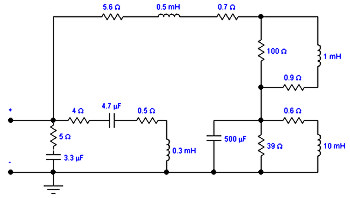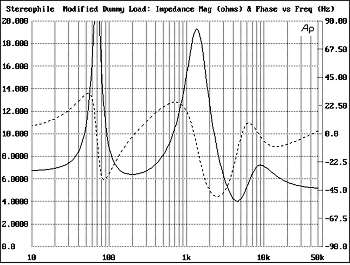RogerJoensson skrev:Jag trodde det var något märkvärdigt med olinjäriteten, som var poängen med den.
Har jag missförstått?
Om man, som du säger, vill "veta att man har en last som beter sig exakt som den som används av LTS, för de som vill testa sina produkter och få dem att prestera maximalt i en väldigt LTS-lik F/E-test." så är det naturligtvis en poäng.
Å andra sidan har många F/E-lyssningar utförts med en lättare last, men på önskemål togs en svårare last fram. Så "märkvärdigt" var det.
Konstruktören skriver (min fetning):
CRITICISM HAS LED TO A MORE DIFFICULT ARTIFICIAL LOAD
The before/after-test I use gives a firm link with reality since the comparison with the input signal is an absolute reference for how the output signal should sound.
However, from time to time criticism has been given about my artificial load - which corresponds to my loudspeakers, pi60 - has been a too easy load. Well, I am not impossible even if I have suggested that this load has given very significant results.
Therefore I have accepted the criticism and designed a new stereophonic artificial load that in a better way will cover the main part of the loudspeakers on the market, even those constituting a little more difficult load. I have not given way to the temptation to design the load according to the most extreme impedance monsters since such loads could knock out amplifiers that would be quite excellent to drive 95% of the loudspeakers on the market.
DIFFICULT 8 OHM LOUDSPEAKER
In short; the load corresponds to a difficult 8 ohm speaker, where neither the brain of the designer, nor the speaker he has designed, have been carried out with signs of a short circuit at any frequency. This means in plain English that the impedance does not apply to the specification of an 8 ohm speaker according to the DIN-norm, because such speakers don't grow on trees.
The following describes the impedance of the load more in detail:
* The statical minimum impedance is 3.5 Ohm at 5 kHz.
* The minimum impedance in the bass range is 5 Ohm at very low frequencies and around 200 Hz.
At 38 Hz you will find the top value 42 Ohm, corresponding to a closed box with a moving mass of 28 grams and a force factor of 10 N/A and finally a compliance of 1600 N/m. This compliance simulation also has been made excessively nonlinear in the artificial load. This will force the amplifier to deliver a strongly distorted current, just like with a normal loudspeaker, in order to deliver a correct voltage. This is a very hard task for many amplifiers!
* Furthermore, the artificial load has been given low impedances in conjunction with large phase angles. The impedance curve has a dip at 2000 Hz with the minimum value of 4.5 Ohm, just like many earlier English loudspeakers. The worst spot is just below this dip, where the impedance is 5 Ohm at the same time as the phase angle reaches 70 degrees!






